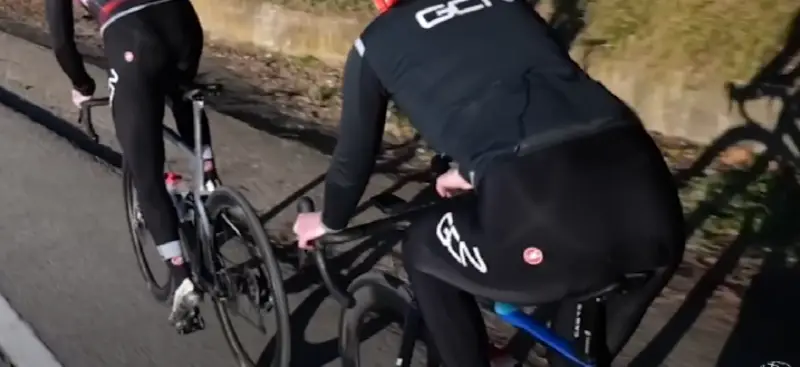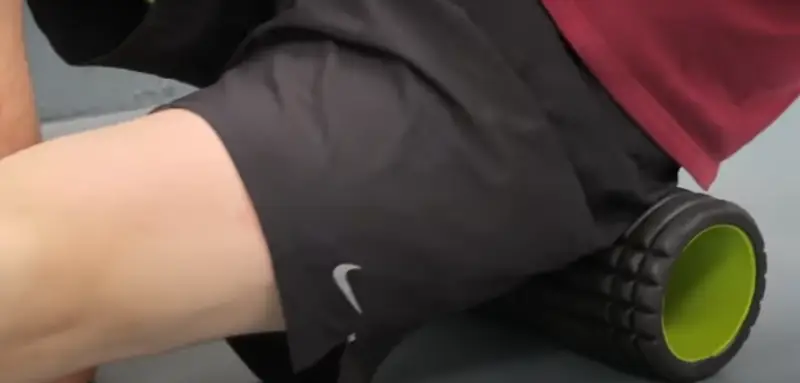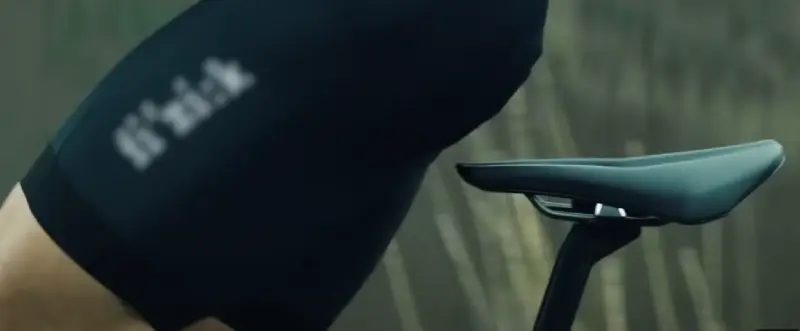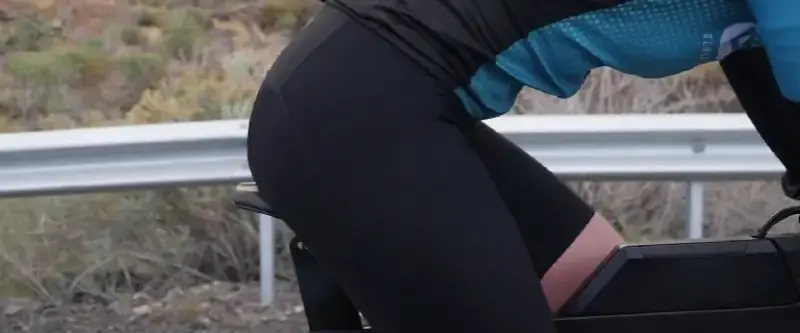Sore Bum After Cycling can lead to skin irritation, chafing, and infection. This is primarily because of prolonged friction, pressure, and sweat in the saddle area. The symptoms manifest as skin abrasions, boils, or cysts.
Applying an ice pack can help reduce soreness and inflammation after cycling and experiencing a sore bum. You can also take a warm bath with Epsom salts or treat yourself to a massage. Stretching can relieve muscle tension, improve blood flow, and reduce inflammation, which can help speed up the healing process.
Today’s blog post will cover the treatment of sore bums after cycling and prevention strategies for speeding up your recovery.
How To Treat A Sore Bum After Cycling: 7 Effective Ways

Sore bums are common among cyclists. These discomforts can arise from long rides, improper bike fit, or lack of proper cycling gear. If you’re experiencing soreness after cycling, you can ease discomfort and promote healing. Here are some effective methods to treat a sore bum after cycling:
Cool-Down
After cycling, don’t just hop off your bike. Take some time to cool down and give your body and bottom the care they need. Stretch, take a short walk, and allow proper blood flow to return. This is the initial step in treating a sore bum after cycling.
Apply Ice or Cold Packs
Apply ice or cold packs to your bum area after cycling to ease soreness. The cold temperature helps reduce inflammation, numb the pain, and promote faster recovery. Put the ice pack in a thin cloth to prevent skin contact and apply it to the affected area for 15-20 minutes. Repeat this process every few hours for the first day or two after cycling to experience relief.
Apply Topical Treatments
Topical treatments can also soothe a sore bum. Consider using over-the-counter creams or ointments designed to relieve pain and reduce inflammation. Look for products containing ingredients like arnica, menthol, or aloe vera, which have cooling and healing properties. Gently apply the topical treatment to the affected area following the instructions provided on the package for optimal results.
Take a Break from Cycling
Active lifestyles are crucial to good health, but it’s crucial to give your body enough time to rest and recuperate when experiencing discomfort from cycling. Taking a break from cycling allows the affected area to heal and prevents further irritation. During this period, engage in low-affected activities, such as walking or swimming, to maintain fitness without exerting additional pressure on your sore bum.
Avoid Tight Clothing
Tight clothing, particularly tight cycling shorts, can exacerbate pain and prolong the healing of a sore bum. Opt for loose-fitting, breathable clothing made from moisture-wicking materials to prevent friction and irritation. Loose clothing promotes airflow, reduces sweat buildup, and minimizes chafing, making recovery more comfortable.
Keep the Area Clean and Dry
Proper hygiene is vital in preventing infection and promoting healing for a sore bum after cycling. Clean and dry the affected area to avoid bacterial growth and irritation. After washing the area with a mild soap, use a soft towel to remove moisture. Consider using a gentle, unscented moisturizer to keep the skin hydrated without causing further irritation.
Use a Recovery Foam Roller

A foam roller helps release tension and tightness around your bum after a ride. Roll the foam roller gently back and forth to improve circulation and massage sore muscles.
Prevent Bum Sore after Cycling: 8 Essential Tips
Cycling is an excellent exercise and a great way to explore the outdoors, but many cyclists experience a sore bum, making riding uncomfortable and even painful. To help you enjoy your rides without discomfort, here are nine essential tips to prevent a sore bum after cycling:
Get Good Cycling Shorts
Wearing high-quality cycling shorts is one of the most critical factors in preventing bum soreness while cycling. Look for shorts specifically designed for long rides with features like padded chamois and moisture-wicking fabric to reduce friction and keep you comfortable in the saddle.
Switch Your Chamois Regularly
The chamois in your cycling shorts provide cushioning and support during your ride. However, chamois can wear out over time and lose effectiveness, increasing pressure and discomfort. Therefore, it is recommended that you switch out your chamois regularly to maintain optimal comfort and support.
Ensure Proper Bike Fit
The right bike fit prevents bum soreness and other discomforts while cycling. An incorrectly adjusted bike can unnecessarily pressure sensitive areas, leading to pain and soreness. A professional bike fitting can ensure your bike is correctly set up for your body.
Choose the Right Saddle

Saddles come in all shapes and sizes, and the right one for your body can significantly affect your comfort while cycling. A saddle should fit your sit bone width and support your riding style. Testing out different saddles can help you find the perfect fit.
Stand Up Frequently
To relieve pressure on your bum during long rides, make it a habit to stand up on the pedals occasionally. Standing up allows blood to flow back into compressed areas and gives your bum a much-needed break from the saddle.
Take Regular Breaks from Cycling
If you plan an extended ride, schedule regular breaks to give your bum time to rest and recover. Even a brief break off the saddle can help prevent soreness and discomfort from building up.
Opt for Padded Shorts
Besides investing in good-quality cycling shorts, consider wearing padded shorts for extra cushioning and protection. Padded shorts can help absorb shock and reduce pressure on sensitive areas, enhancing overall cycling comfort.
Select a Supportive Seat
Your choice of bike seat can significantly contribute to preventing bum soreness. Look for a seat that supports your sit bones and promotes proper riding posture. A supportive seat can help disperse weight and minimize pressure points.
Conclusion
Cycling should be an enjoyable escape, not a pain in the rear. Dealing with a sore bum after cycling doesn’t have to be complicated. Simple strategies such as cooling down, topical treatments, taking a break, or changing your cycling shorts can make a significant difference. Remember, your bum deserves proper care after a long ride, so don’t neglect it. Treat it right, and you’ll be back on the trail soon.
FAQs
How long does it take for bum soreness from cycling to go away?
The duration of bum soreness after cycling can vary depending on the rider and the ride’s intensity. Soreness should improve within a few days as your muscles recover.
When to see a doctor?
You should monitor saddle sores at home for any signs of worsening. If redness, swelling, warmth, pus, fever, or swelling don’t improve with home care, medical attention is needed. The healthcare provider can recommend medications such as antibiotic creams and oral antibiotics.


